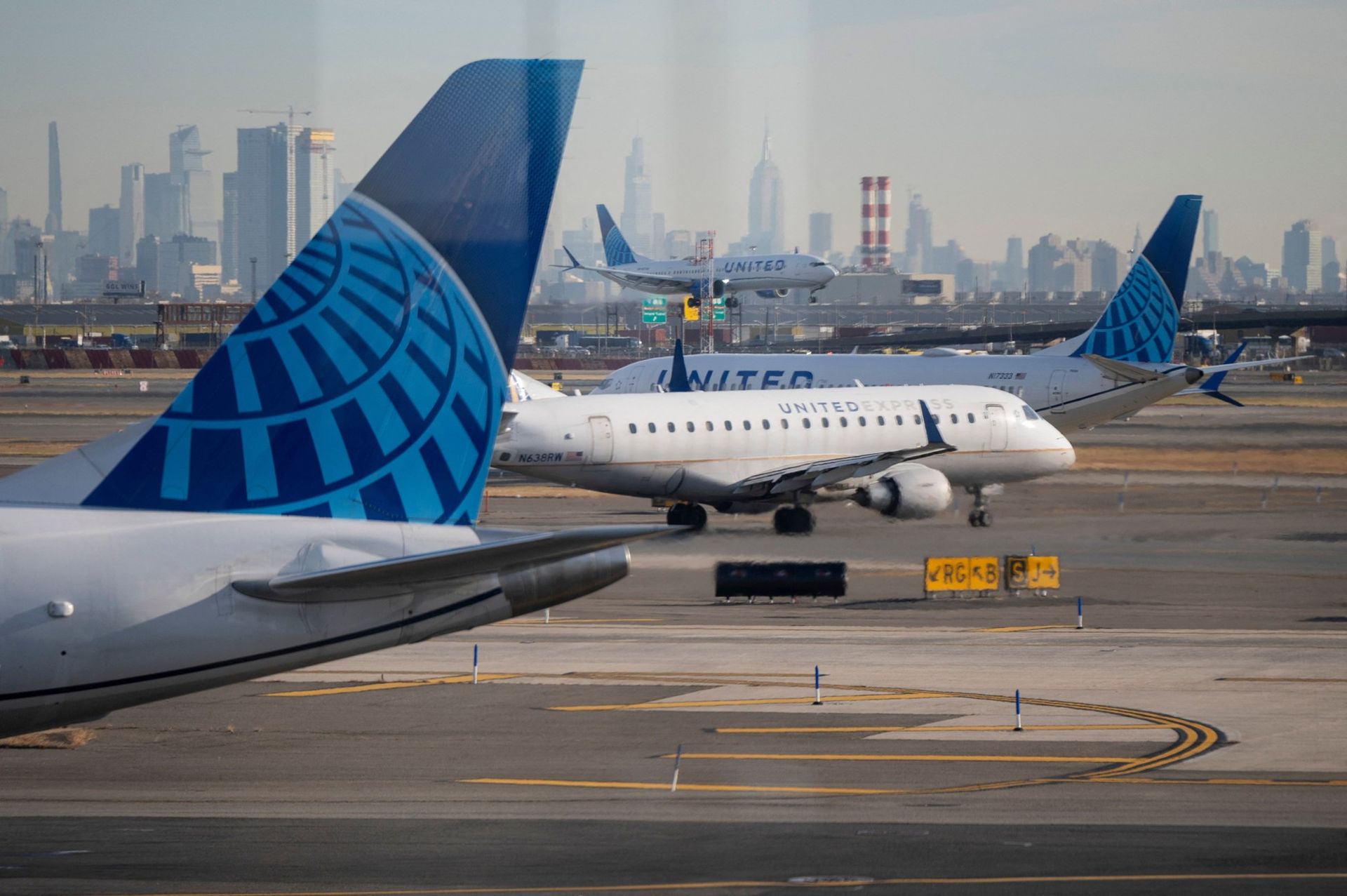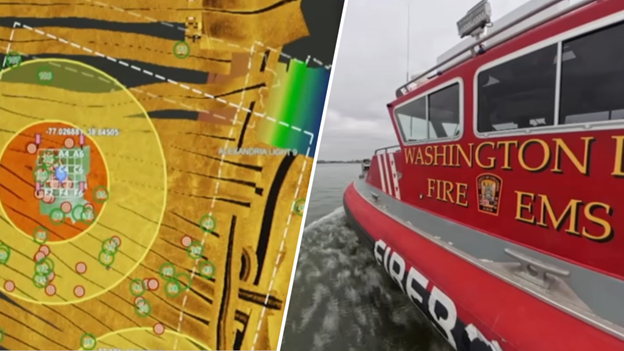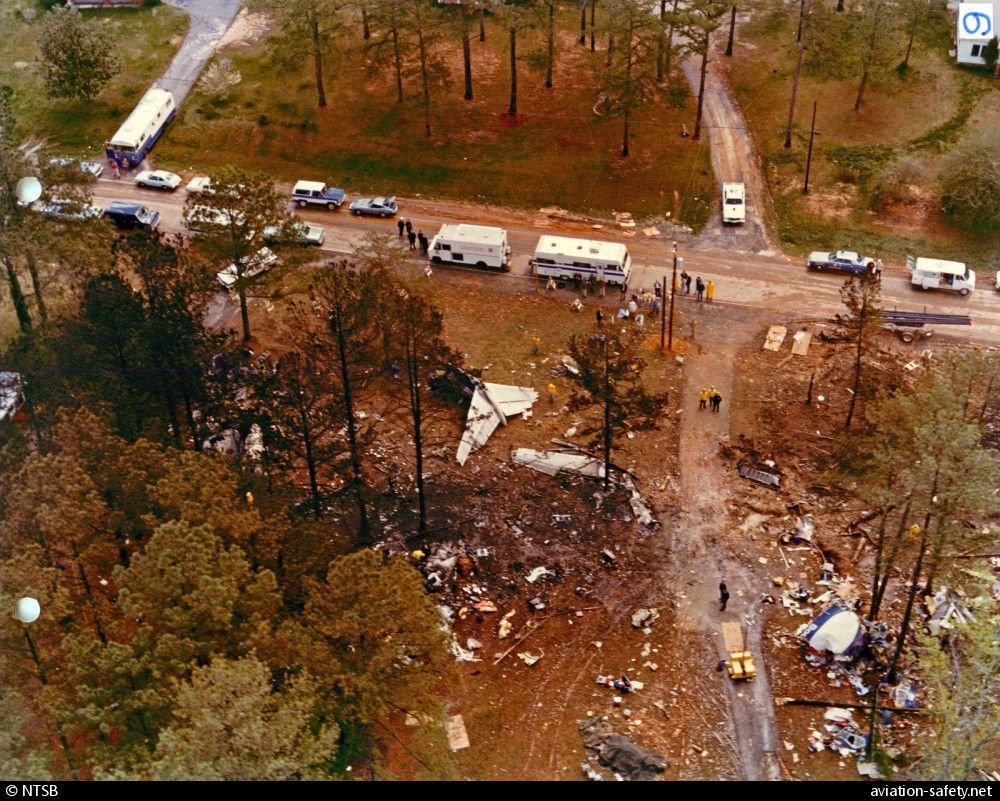ARFF Daily News
Published on:
Friday the 4th of April, 2025
We close out the week with the following stories...
As you know, or should know, the U.S Fire Service has suffered several cuts to federally related fire programs. Our first article today is from Chief Billy Goldfeder and his "Secret List" that is helpful for what we can do now to voice our concerns over the growing list of what has been cut by politicians, shutdowns that include:
* The National Fire Registry (NFR) for Cancer
* The Firefighter Fatality Investigation Program
* The National Personal Protective Technology Laboratory
* The World Trade Center Health Program
* The shutting of the National Fire Academy
Consider Chief Goldfeder's suggestions and act!
Have a safe weekend!
Tom
So NOW What? (The Secret List)
All,
A few of you wrote asking what you can do to speak up about the cuts to federally related fire programs.
Well, if you're one of those who are concerned, start by reaching out to your fire service association as well as your federally elected congress or senate member.
BUT...without sounding overly cynical, we wish you luck on contacting your elected folks. Not a whole lotta emails or phone calls get answered...and that's not new. Several years ago before my Mom passed away, I was trying to reach out to my Federal officials about Alzheimer's and dementia issues...and I wrote and called numerous times, and I still haven't heard back ....and she passed away in April of 2018.
It's a shame when our representatives don't have time to respond or avoid hearing things they don't wanna hear. And that is not new, it's bi-partisan and it's a f-ing shame.
SO NOW WHAT:
YOUR BEST BET is to reach out to your affiliated fire association. IAFF, IAFC, NVFC, or whatever group you belong to. I know that their folks ARE working hard in collaboration on these issues and YOU WILL get an email or phone call back when you reach out to your associations.
COLLABORATION: Working with all of them is CFSI-the Congressional Fire Services Institute. All the national fire service organizations are an integral part of CFSI,
THESE ARE THE CURRENT FIRE SERVICE-RELATED "CUTS"
1-The National Firefighter Registry (NFR) for Cancer (NIOSH)
2-The Firefighter Fatality Investigation Program (FFFIPP-NIOSH)
3-The National Personal Protective Technology Laboratory (NPPTL-NIOSH)
4-The World Trade Center Health Program (WTC-NIOSH)
5-The Shutting of National Fire Academy Campus Programs (USFA)
*******HERE IS HOW YOU CAN TAKE ACTION TODAY:
1-Reach out to your fire association(s)-the leaders and legislative crews are working around the clock on these specific issues.
2-Visit CFSI’s Legislative Action Center for information on outreach to Congress.
https://cfsi.org/advocacy-and-outreach/
3-Stay Informed & Engaged
Follow your fire service association and CFSI on social media. Be sure to sign up for the CFSI newsletter to receive updates on legislative developments affecting the fire service.
GO TO:
https://cfsi.org/latest-news/ (Click On Newsletter)
Take Care. Be Careful. Pass It On.
BillyG
The Secret List 4/4/2024-0800 Hours

Single-engine plane destroyed after catching fire at airport in Guthrie
Firefighters prevented the fire from spreading to a nearby hangar
Jonathan Greco - Digital Media Manager
GUTHRIE, Okla. —
A single-engine plane was destroyed after catching fire Thursday at the airport in Guthrie.
Guthrie Fire Department officials said the plane caught fire and was engulfed in flames next to a hangar at the Guthrie-Edmond Regional Airport.
Firefighters prevented the fire from spreading to the nearby hangar.
"The crews did an awesome job getting a quick knockdown and keeping the fire off the hangar. Great work by everyone involved," Guthrie Fire Department officials posted on social media.
Logan County Emergency Management officials said the plane had been under construction and was being worked on when it caught fire. No injuries were reported.
https://www.koco.com/article/plane-fire-guthrie-edmond-regional-airport/64379464

FAA to investigate after fire reported in cabin of United Airlines flight
By Reuters
WASHINGTON, April 3 (Reuters) - The U.S. Federal Aviation Administration said on Thursday it would launch an investigation after the crew on a United Airlines (UAL.O), opens new tab Boeing (BA.N), opens new tab 737 flight from Key West, Florida to Newark, New Jersey, reported a fire in the cabin.
The airplane diverted and landed safely at Washington's Dulles airport around 4:45 p.m. ET (2045 GMT) on Thursday, the FAA said in a statement. United said the diversion was prompted by light smoke venting from a galley oven.
All passengers deplaned normally at the gate and the airline arranged for a different aircraft to take passengers to Newark on Thursday evening, United added. The plane had 98 passengers and five crew on board.

Passengers evacuated plane at DIA onto wing and with their luggage. The NTSB is investigating why.
American Airlines flight 1006 diverted to DIA where fire broke out
By Bruce Finley
How passengers, some with their carry-on luggage in hand, evacuated an American Airlines plane that caught fire at Denver International will be part of the federal investigation into the incident, according to the National Transportation Safety Board.
Photos showed passengers scrambling out on a wing above the smoke as ground crew members tried to get the bridge to DIA in place and positioned slides and ladders.
“Evacuation procedures will be part of the investigation,” an NTSB email said. The role of the bridge, in particular, “is something the investigators are looking into.”
An NTSB-led team has been investigating at DIA since the incident on March 13, when American Airlines Flight 1006 took off from Colorado Springs at 4:52 p.m., bound for Dallas-Fort Worth. It diverted at 5:14 p.m. to DIA after crew members reported engine vibrations. The aircraft landed safely and taxied to gate C38, where the fire broke out.
DIA ground crews went to the gate and doused the flames as 172 passengers escaped. A dozen passengers were taken to the University of Colorado Hospital in Aurora for treatment of smoke inhalation and minor injuries.
An NTSB study done 25 years ago of 46 evacuations over a two-year period found engine fires are the most common cause and that, even when flight attendants commanded passengers to “leave everything,” passengers often took their belongings. Nearly 50% of passengers interviewed for the study reported trying to remove a bag during the evacuation.
The FAA sets standards for airlines to follow in emergencies.
“Airlines determine how to do that, and flight attendants typically instruct passengers to leave all carry-on luggage in the cabin if they evacuate,” FAA spokeswoman Cassandra Nolan said. “FAA regulations require passengers to obey crewmembers’ safety instructions,” Nolan said.
American Airlines officials did not respond to requests to discuss what happened.
Airline crews undergo training to prioritize passenger safety and quick movement of people off the plane.
At Metropolitan State University of Denver, Aviation and Aerospace Science professor and FAA chief instructor Chad Kendall, a former commercial airline pilot for American Eagle and other airlines, saw the incident as a case study in the complexities of evacuating aircraft.
Beyond the question of which exits were used and crew members’ actions, “a crucial and unpredictable element is human behavior,” Kendall said. “Passengers often react instinctively under stress, which can either aid or hinder the process, he said.
“Even if the jet bridge was in use for passengers deplaning through the forward exits, the urgency and panic inside the cabin may have led passengers to independently initiate an evacuation through the over-wing exits,” he said. “Instinct takes over, and their primary focus becomes finding the nearest available exit to ensure their safety.”
https://www.denverpost.com/2025/04/01/american-airlines-flight-denver-fire-luggage-investigation/

DC firefighters used tech to find plane crash debris fast. Its funding is now under review
Using a sonar mapping tool after the Potomac midair disaster, D.C. Fire and EMS turned what could have been a weekslong operation into just days
By Ted Oberg, News4 Investigative Reporter, Katie Leslie, News4 I-Team producer, Jeff Piper and Carlos Olazagasti
D.C. firefighter Jeff Lenard had just wrapped up a training in California in January when he learned a regional jet collided with an Army helicopter over the Potomac River, killing all 67 people on board. Unable to immediately respond on the scene, he jumped into the effort in a different way – by using technology.
As rescuers worked to locate crash victims, Lenard and Tim Hutchison, of D.C.’s Office of the Chief Technology Officer, quickly deployed tools to tackle another monumental task: helping divers locate underwater debris and document what they found.
The men came up with an idea for a phone-based app that Hutchison developed within hours of the disaster, one that allowed divers to take images of recovered wreckage, confirm its location in the water and upload the data, which was instantly fed into a database they turned over to investigators.
“We were able to create a common operating picture within the first hours of this incident. That allowed everybody to try to be on the same page,” Lenard said.
As the rescue operation gave way to recovery, D.C. Fire and EMS deployed sonar technology to scan the bottom of the river with sound waves, building detailed maps of the riverbed just off Reagan National Airport. The technology was purchased years ago under a grant program now under nationwide review by the Trump administration.
With the sonar mapping tool, firefighters were able to swiftly deploy divers to retrieve what they found following the collision, cutting what they said could have been a weekslong operation into just days.
“The most important thing is being out there and finding every person who lost their lives in this crash – to bring them home to their family,” Lenard said. “If you have 100 exhausted divers, your searches are not going to be as effective.”
That early effort gave them a picture of what they couldn't see: an underwater photo album of debris they said showed wreckage as large as 18 feet and as small as a cellphone.
“Seeing personal belongings being pulled up was definitely a moment of pause. It really hit home,” Hutchison said.
The technology was so precise, it may have also recovered parts of the Air Florida plane that crashed into the 14th Street Bridge in 1982, killing more than 70 people. Lenard said D.C. Fire turned over those artifacts to the FBI for examination.
D.C. Fire commissioned the sonar equipment through a federal port security grant from the Federal Emergency Management Agency a few years back, never knowing it would be used to help recover loved ones for families in a plane crash.
But now, the program FEMA states is designed to bolster security at ports across the country is under review by the Trump administration, which has placed a freeze on federal spending, including on the Port Security Grant Program.
President Donald Trump has said he wants to eliminate FEMA. It's unclear what would happen to those dollars.
“It’s people's lives and livelihoods that are at stake,” said Cary Davis, president and CEO of the American Association of Port Authorities.
How port security funds are used
Davis said the port security program helps protect against increasing threats at the nation's ports in ways people don't realize, and that it's already faced funding shortfalls for years.
“The needs far out outstrip the dollar levels that Congress in recent years has given for seaport security,” Davis said.
In fiscal year 2024, the grant program pledged $90 million in funds to ports and government authorities for maritime security plans. That’s down from $100 million in fiscal years 2021, 2022 and 2023, according to FEMA.
How D.C. Fire used the dollars on sonar technology, as well as night vision optics capabilities, and deployed them on the mid-air disaster response earned notice from top investigators.
Speaking to port leaders at a recent conference, the head of the National Transportation Safety Board praised D.C. Fire's contribution to her investigation and commended their use of the federal funds.
“That just shows how critical those grants are,” NTSB Chair Jennifer Homendy told the I-Team. “Not just for ports, but also for these lifesaving measures and for recovery after a tragedy.”
The I-Team reached out to FEMA to ask about the future of the port security grant program that funded D.C.’s sonar technology.
In a statement, a spokesperson didn't directly address the program but acknowledged current grantees are in limbo, saying: “FEMA is conducting a careful review of all grant allocations before releasing funds” and as "individual program reviews are completed in the coming days, we will follow up with respective grant recipients.”
D.C.’s first responders, including CJ Isbell, said that, while the funds they received years ago helped create critical technology, it’s the people they used it for who matter most.
“Our entire goal was to bring those family members home,” Isbell said. “Our job was not finished until we had that.”
Reported by Ted Oberg, produced by Katie Leslie, shot and edited by Jeff Piper and Carlos Olazagasti, and edited by Jeff Piper

NTSB Final Report: Gippsland GA-8
Gust Of Wind Brought The Nose Up And The Right Wing Contacted The Ground
Location: Tuntutuliak, Alaska Accident Number: ANC24LA055
Date & Time: June 26, 2024, 14:30 Local Registration: N13AV
Aircraft: Gippsland GA-8 Aircraft Damage: Substantial
Defining Event: Loss of control on ground Injuries: 7 None
Flight Conducted Under: Part 135: Air taxi & commuter - Scheduled
Analysis: The pilot reported that during takeoff roll in gusting wind conditions she applied full power and the airplane veered slightly left. Then a gust of wind brought the nose up and the right wing contacted the ground, resulting in sustained substantial damage.
The pilot reported that there were no preaccident mechanical malfunctions or failures with the airplane that would have precluded normal operation.
Probable Cause and Findings: The National Transportation Safety Board determines the probable cause(s) of this accident to be -- The pilot's failure to maintain directional control during takeoff after an encounter with a gusting wind, which resulted in a wing strike.
FMI: www.ntsb.gov

Today in History
48 Years ago today: On 4 April 1977 Southern Airways flight 242, a DC-9-31, crashed at New Hope, Georgia, USA after a dual engine loss of power, killing 63 occupants and 9 persons on the ground; 22 survived the accident.
Date: Monday 4 April 1977
Time: 16:19
Type: McDonnell Douglas DC-9-31
Owner/operator: Southern Airways
Registration: N1335U
MSN: 47393/608
Year of manufacture: 1971
Total airframe hrs: 15405 hours
Engine model: P&W JT8D-7A
Fatalities: Fatalities: 63 / Occupants: 85
Other fatalities: 9
Aircraft damage: Destroyed, written off
Category: Accident
Location: New Hope, GA - United States of America
Phase: En route
Nature: Passenger - Scheduled
Departure airport: Huntsville-Madison County Airport, AL (HSV/KHSV)
Destination airport: Atlanta Municipal Airport, GA (ATL/KATL)
Investigating agency: NTSB
Confidence Rating: Accident investigation report completed and information captured
Narrative:
Southern Airways flight 242, a DC-9-31, crashed at New Hope, Georgia, USA after a dual engine loss of power, killing 63 occupants and 9 persons on the ground; 22 survived the accident.
Flight 242 operated as a scheduled passenger flight from Muscle Shoals, Alabama, to Atlanta, Georgia, with an intermediate stop at Huntsville, Alabama. Flight 242 departed Muscle Shoals at 15:21 and landed at Huntsville about 15:44.
About 15:54, Flight 242 departed Huntsville on an instrument flight rules (IFR) flight plan for the Hartsfield-Atlanta International Airport; there were 81 passengers and 4 crewmembers aboard.
The flight's route was direct to the Rome VOR and then a Rome runway 26 profile descent to Atlanta. Its estimated time en route was 25 min and its requested en route altitude was 17,000 ft.
At 15:56, the controller told Flight 242 that his radarscope was showing heavy precipitation and that the echos were about 5 nmi ahead of the flight.
At 15:57:36, the controller said, "...you're in what appears to be about the heaviest part of it now, what are your flight conditions." Flight 242 replied, "...we're getting a little light turbulence and...I'd say moderate rain." At 15:57:47, the controller acknowledged Flight 242's report and told the flight to contact Memphis Center.
The Memphis Center controller advised the flight that a SIGMET was current for the area. He then told Flight 242 to contact Atlanta Center.
At 16:03:20, Flight 242 switched to another sector of Atlanta Center, established communications on the new frequency and reported being level at FL170. As the aircraft entered an area of rain, the flight crew began discussing the weather depicted on their radar. Based on information from the airborne radar, the captain initially decided that the storms just west of the Rome VOR were too severe to penetrate. Shortly after his initial assessment of the storm system, the captain decided to penetrate the storm area near the Rome VOR.
At 16:06:41 Atlanta Center cleared Flight 242 to descend to and maintain 14,000 ft. Shortly afterwards the aircraft entered an area of heavy hail or rain, which continued for at least one minute. The ingestion of intense rain and hail into the engines caused the rotational speed of both engines to decrease below the engine-driven electrical generator operating speeds, and resulted in normal electrical power interruption for 36 seconds. The flight crew likely advanced one or both thrust levers, restoring its generator to operation and provide normal electrical power.
After establishing contact with Atlanta Center again, the flight was told to maintain 15,000 ft. At 16:09:15, Flight 242 reported to Atlanta Center, "Okay...we just got our windshield busted and... we'll try to get it back up to 15, we're 14." After reported that the left engine had flamed out, the flight was cleared to descend to 13,000 ft.
Meanwhile both engines' high-pressure compressors began to stall severely due to ingestion of massive quantities of water. The severe compressor stalls produced an overpressure surge which deflected the compressor blades forward in the sixth stage of the low-pressure compressors; these blades clashed against the fifth-stage stator vanes and broke pieces from the blades and vanes.
Pieces of blades and stator vanes were then ingested into the high-pressure compressors and damaged them severely.
Continued high thrust settings following the severe damage to the high-pressure compressors probably caused severe overheating in the turbine sections of both engines, and the engines ceased to function. Shortly before normal electrical power was again, the flight crew radioed that both engines had failed. Atlanta Center told the crew to contact approach control for vectors to Dobbins Air Force Base. Power was then lost for 2 min 4 sec until the APU-driven generator restored electrical power.
After establishing contact with Atlanta Approach Control the flight was told they were 20 miles from Dobbins. As the flight was descending, the captain began to doubt their ability to reach Dobbins. Cartersville was closer at 15 miles, so the controller gave vectors for Cartersville. Unable to make it to Cartersville, the crew began looking for a clear field or highway for an emergency landing.
At 16:18:02, Flight 242's last transmission to Approach Control was recorded: "... we're putting it on the highway, we're down to nothing."
The aircraft's outboard left wing section first contacted two trees near State Spur Highway 92 south-southwest of the community of New Hope. About 0.8 miles farther north-northeast, the left wing again contacted a tree alongside the highway within the community of New Hope. The left and right wings continued to strike trees and utility poles on both sides of the highway, and 570 ft after striking the first tree in New Hope, the aircraft's left main gear contacted the highway to the left of the centerline. Almost simultaneously, the outer structure of the left wing struck an embankment, and the aircraft veered to the left and off the highway. The aircraft traveled another 1,260 ft before it came to rest. As it traveled, the aircraft struck road signs, utility poles, fences, trees, shrubs, gasoline pumps at a gas station-store, five automobiles, and a truck.
Of the 85 persons aboard Flight 242, 62 were killed, 21 were seriously injured, and 1 was slightly injured. Additionally, eight persons on the ground were killed. Within a month of the accident, one of the surviving passengers and one person on the ground both died of their injuries.
PROBABLE CAUSE: "Total and unique loss of thrust from both engines while the aircraft was penetrating an area of severe thunderstorms. The loss of thrust was caused by the ingestion of massive amounts of water and hail which, in combination with thrust lever movement, induced severe stalling in and major damage to the engine compressors.
Major contributing factors include the failure of the company's dispatching system to provide the flight crew with up-to-date severe weather information pertaining to the aircraft's intended route of flight, the captain's reliance on airborne weather radar for penetration of thunderstorm areas, and limitations in the FAA's ATC system which precluded the timely dissemination of real-time hazardous weather information to the flight crew."


